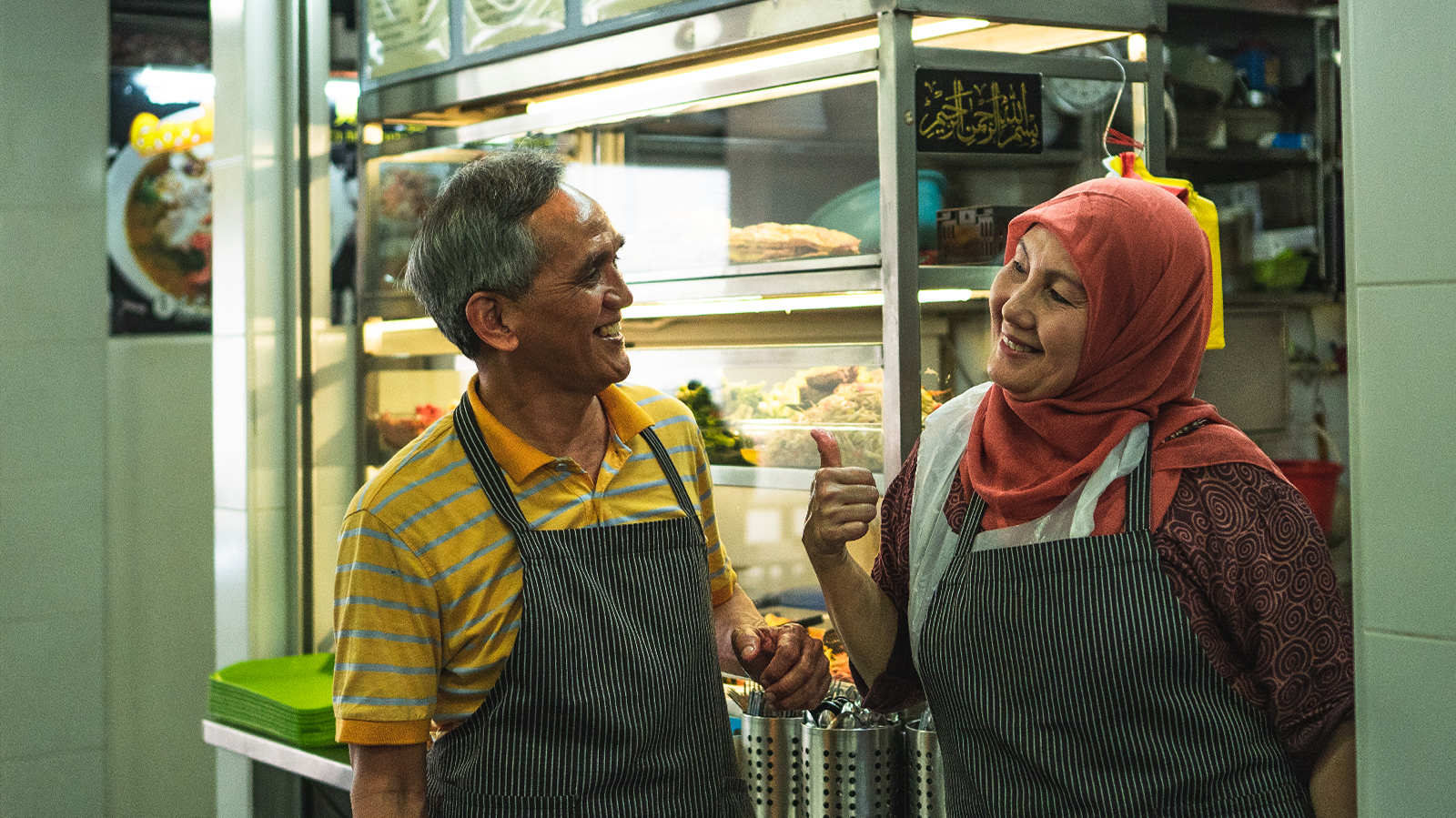Recently, news broke out that a Koufu-run hawker centre, while trying to keep up with the Return Your Tray campaign, was charging hawkers 20 cents for each tray returned by the customer.
Yes, you read that right.
The management was charging hawkers for each tray returned by a customer.
This tray-return initiative was estimated to cost hawkers between $600 to $900 a month, and was a separate cost from dish-washing and cleaning costs – which can come up to $1,100.
Including rent, it was reported that hawkers were paying over $4,000 to rent a stall at the hawker centre. These costs were seen by some Singaporeans as excessive and unfair to the hawkers, noting that they could have no choice but to transfer the costs to customers – aka, rising food prices.
Other stories you might like


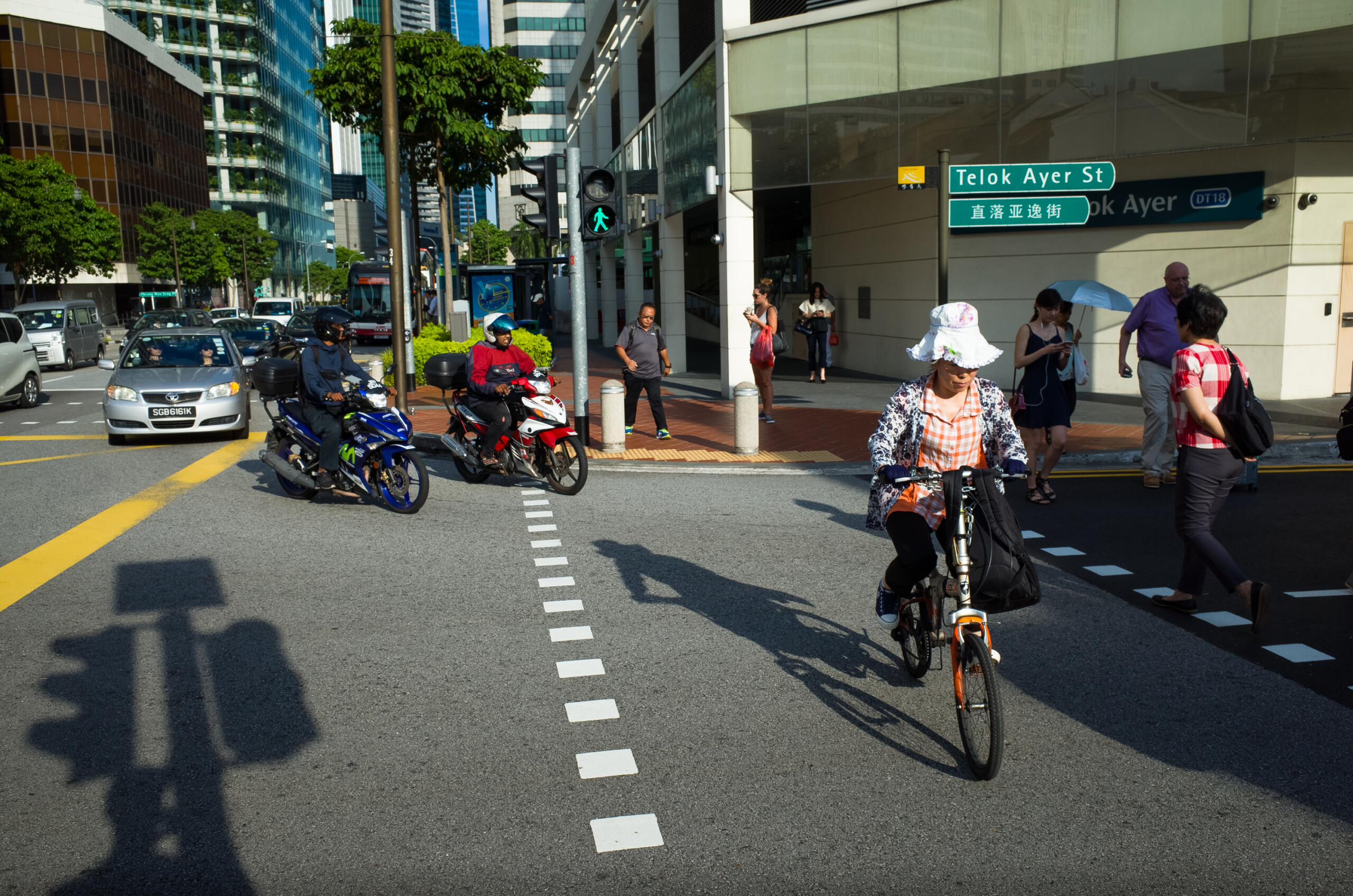
Although it has since been announced that the hawker centre will adopt a deposit system where customers pay a refundable deposit of 20 cents for a tray instead, the controversy has brought our hawker culture into the spotlight, including the systemic problems of rising rental costs and stifling management policies that hawkers face.
Then, Pat Law, founder of a local social media agency, shared about how her hawker parents were once made to apologise for not serving free herbal soup to non-paying customers, adding another dimension to the conversation – the fact that customer attitudes matter, too.
Singaporeans love our hawker food, and we’re proud of our hawker heritage – a culture that’s to be nominated for a UNESCO listing.
But do we stop at extending the same love to our hawkers?
The Pride had a chat with a few hawkers at Telok Ayer Food Centre to find out what they think.
Nur and Amin, co-owners of Nuramin, a nasi padang stall
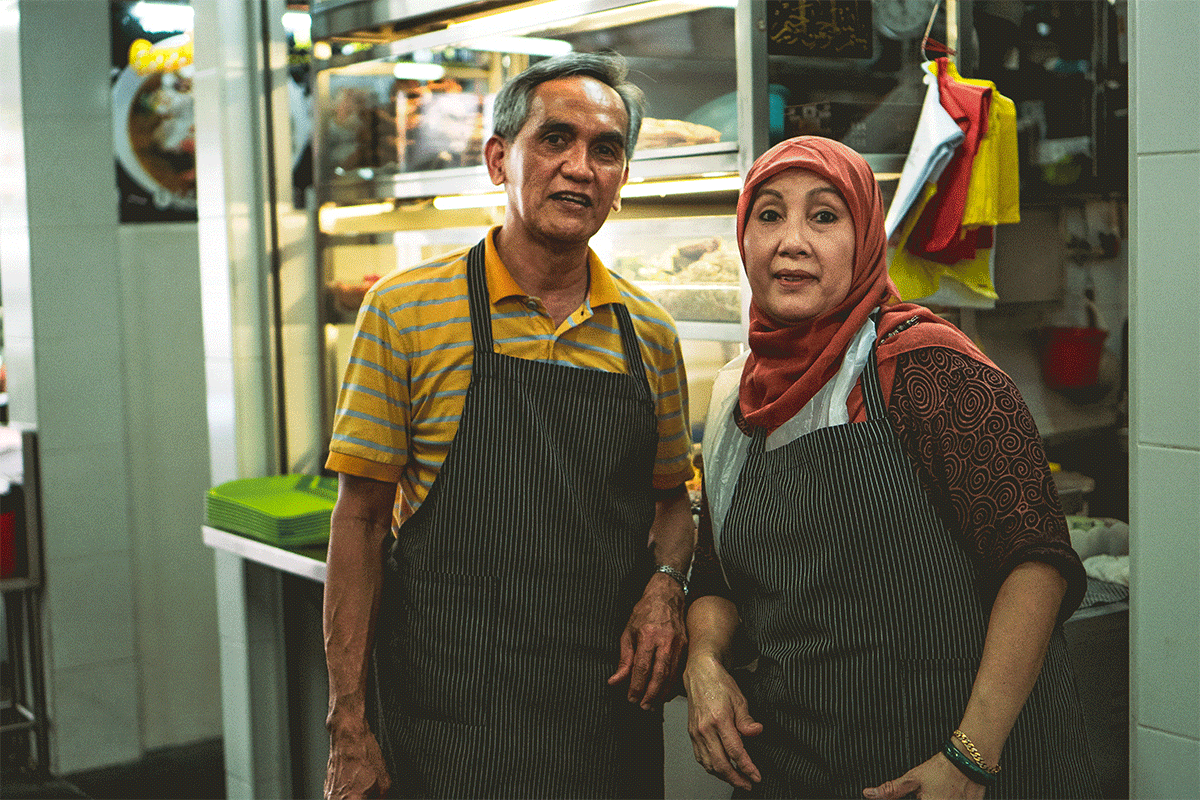
For Nur and Amin, the husband-and-wife duo of popular nasi padang store Nuramin, respect is all they’re looking for.
“My wife Nur has manned this stall for over two decades, initially with the help of hired staff. I joined her a few years ago, after I left my job,” shares Amin, who is in his mid-50s. “Our stall, Nuramin, is a combination of our names!”
Nuramin’s delicious food and generous portions have won them regular customers, many of whom Amin is heartened to see repeatedly patronise his stall.
“We encounter nice, friendly customers more than unpleasant ones,” he says. “Honestly, there are probably only one or two ‘bad’ customers out of every 100.
“However, we did recently have a young female customer cheat us of a free meal,” Amin reveals. “Often, customers will order food but forget they don’t have enough cash. I trust them, so I let them have their meals first. They can always come and pay us back later – even the next day, if they can’t make it back on the same day.
“But this lady just took her food and till now, hasn’t come back to pay for her bill. I was quite disappointed.
“We also have entitled customers who demand bigger pieces of meat or more food. Usually, we’ll just give in and ladle more onto their plates,” he admits.
“But many of our regulars are friendly and polite. It’s always a joy to see them again,” he smiles.
For Amin and his wife, who consider themselves generous people, they are more than willing to give free sambal and plastic cutlery to patrons at the hawker centre, even if they do not buy any food from Nuramin – provided they ask nicely.
“We’re actually fine with people taking our plastic cutlery or sambal chilli – the only problem is when they are rude about it or if they just snatch it.
“Often, people just come up and grab many saucers of chilli, and then walk away!” he says woefully.
Nuramin’s cutlery and sambal may come free for patrons at the hawker centre, but not for its stall owners, who pay for everything out of their own pocket.
“I actually order batches of disposable cutlery daily, as we have no storage area to keep a bulk order in. It costs me around $20 a day,” says Amin.
In addition to the monetary expenses of running a business, Nur and Amin spend up to 12 hours a day at their stall, preparing, cooking and serving their food to customers.
“Our stall opens from 11am to 4 or 5pm daily, depending on how quickly we sell out,” says Amin. “But, since we spend four hours or more a day preparing the dishes – ayam goreng, beef rendang, sayur lodeh – and about two hours after closing time to clean up, our day typically starts at 7am and ends at 7pm.”
The hawker life is not an easy one.
“We have to invest our own money into this stall – from ingredients to equipment, and of course, rent. We sacrifice time, energy, and sometimes our health,” he continues.
“We’re trying to earn a living, just like everyone else – I wish more Singaporeans would understand that about us.”
In spite of the challenges, Amin says the hard work is worth it.
“We really love our job. And I’m proud that we’re preserving our Malay heritage and culture,” he admits bashfully.
Although he’s tried to convince his two sons and one daughter to take over the stall one day, none have been very willing to do so. But he doesn’t blame them for it.
“Every generation is different. I can understand why my children would rather pursue their own career paths.
“I don’t know what will happen to our stall once my wife and I retire. I guess I do worry a little about its future, but I am sure everything will work out fine in the end.”
He jokes: “Perhaps we will just sell our shop and finally go on a holiday for once!
Ashiq and his uncle, who run a drinks stall
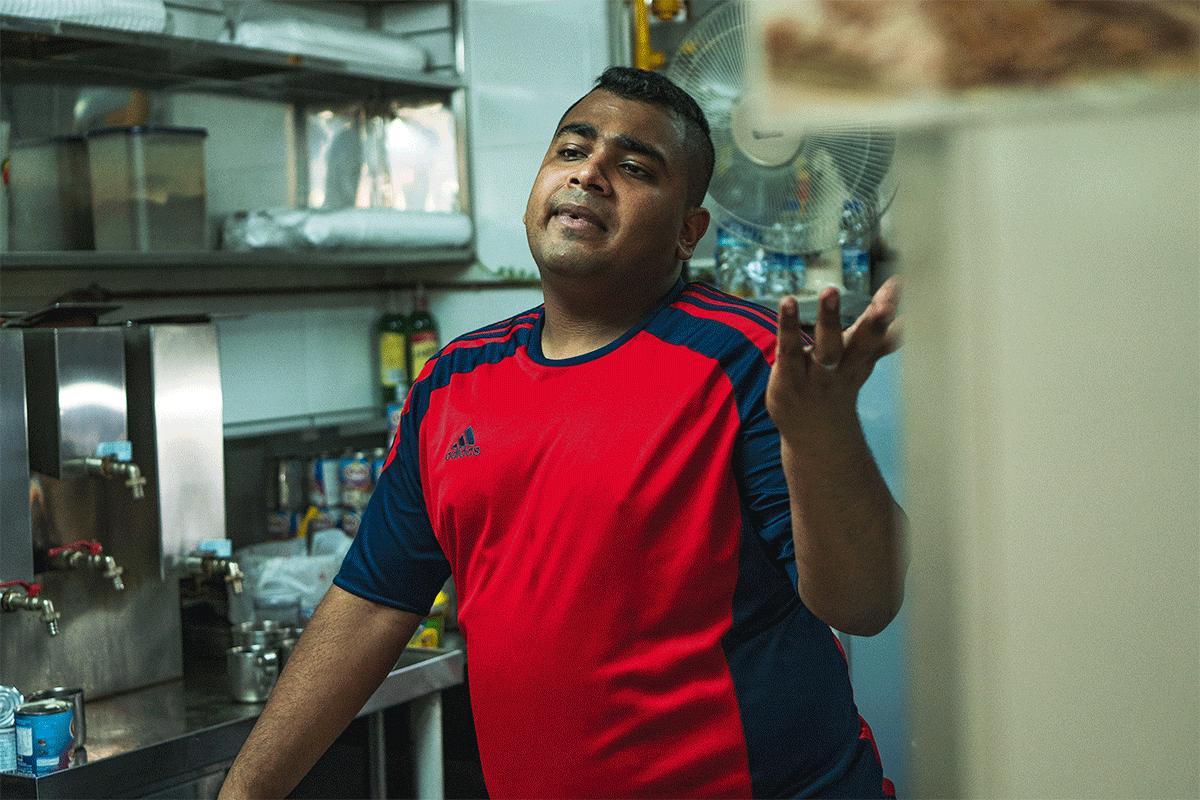
Ashiq Ismail, 20, has helped out at his uncle’s drinks stall for two years now. Their stall was previously at Golden Shoe Food Centre before moving to its current location last year.
He’s been exposed to his fair share of rude, and at times abusive, customers during his stint at his uncle’s stall.
“Some customers want to bargain. Recently, one lady in her 50s came up and dictated, “Coke for $1” and tried to pass me a $1 coin. I was perplexed, and said that I was the one selling and setting the prices, not the other way around! She insisted that “behind sell for $1” so I told her to go buy from behind, lah!” Ashiq chuckles.
“There are some who come up to us and genuinely have no money. We can usually tell who is unable to pay – and my uncle and I will give them free drinks and even biscuits, if they ask.”
Occasionally, Ashiq has faced customers who find it acceptable to berate him and his uncle. For example, during peak lunch hours, the long queues of a neighbouring stall form in front of his stall, which affects business, and not everyone takes kindly to being asked to move aside.
“A few days ago, my uncle tried to reason with one of the guys in the queue, to please move aside so others could access our stall. Wah, that guy got so mad! He started shouting at my uncle,” says Ashiq. The pair got into an argument before the guy finally moved along with the queue.
Mostly, Ashiq and his uncle try not to dwell on these incidents. He explains: “There’s nothing we can really do about it, other than talk to them.”
And these unpleasant encounters, along with the hard work it takes to be a hawker, have not stopped him from hoping to run his own stall one day.
On what he hopes more customers can understand, Ashiq says: “Manning a stall isn’t an easy job. Even though we at the drinks stall don’t have to cook and serve food, we still work really hard.
“We’re all just trying to earn a living. Be decent, don’t disrespect us, and don’t try to cheat us or treat us badly, that’s all.”
The Wang siblings who run a Western food stall
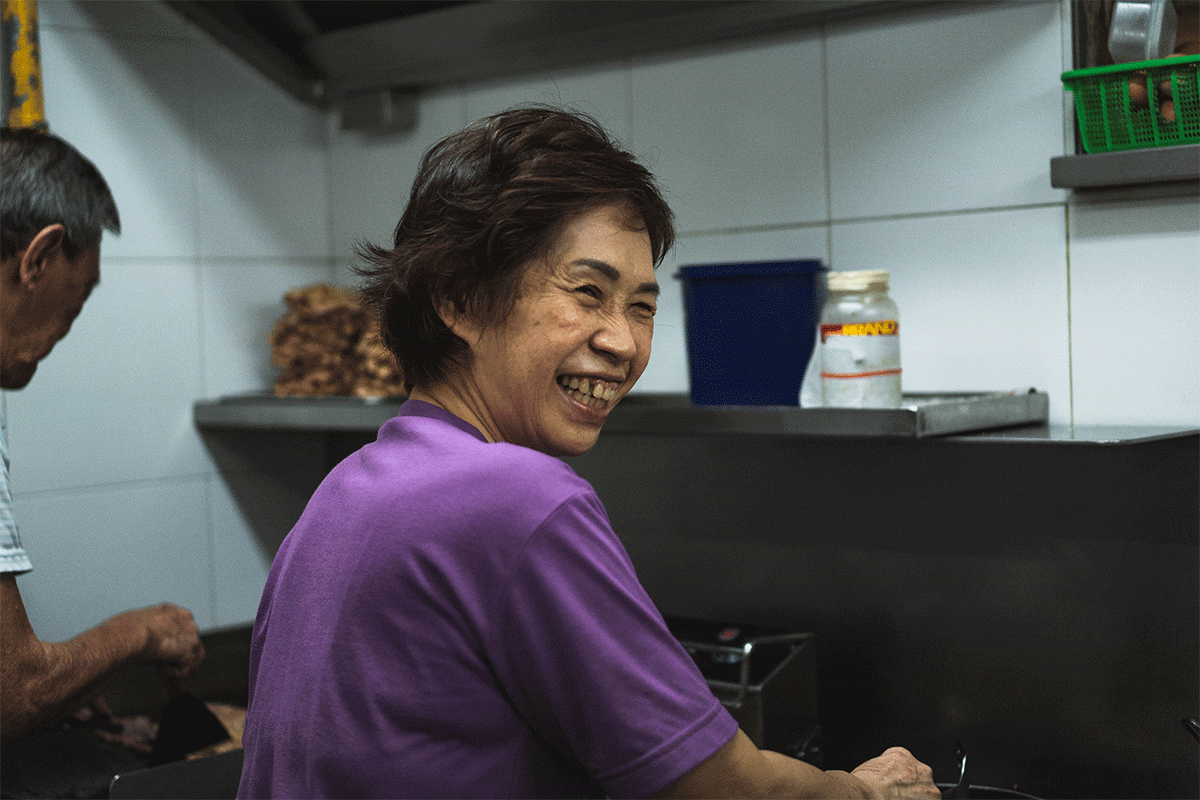
For 35 years, three Wang siblings have worked together to run Johnson’s Western Food, a stall that specialises in chicken chop and fish and chips. With each other’s company and support, the siblings take on any challenge that comes their way.
“We’ve been owners of this stall since 1983,” says Wang Ah Gee, the eldest of the three. “We’ve had to move our stall a few times – most recently, from Golden Shoe Food Centre to here.”
Smiling at us, the youngest sibling, Wang Jui Nei, says that she is happy with her job.
“We don’t actually encounter rude customers very often. Maybe because we are located in the central business district, most of our customers are well-educated professionals?” she wonders aloud.
“We do have customers who will try to ask for more… most times, I feel like I have no choice but to give them more fries, or a bigger portion,” Madam Wang admits.
At that moment, a regular customer appears at the counter. He and the eldest Wang brother share a jovial conversation, first over what to order, then trade anecdotes about their day. The latter tells The Pride: “It’s always a joy to catch up with our regulars.”
Although the three siblings are getting on in years, closing the shop isn’t currently on the table. “We don’t plan on retiring soon,” says Madam Wang, who is in her late 50s. “But we aren’t sure what the future of our stall will be – we do hope that one of our children will take over one day but as they are still quite young, we haven’t really discussed it with them.
“It would be great if we could preserve the stall, though. To us, this is more than just a stall. It is part of our family and our family business.” she says.
As these hawkers’ stories tell us, the hawker centre is not just a place in Singapore to buy and sell food, but also one where friendships form and a sense of community can come alive.
To the hawkers who see their hawker stalls as their livelihood, pride and passion, Singaporeans wanting to preserve and promote what they do is one thing.
Giving them the respect and support they need to thrive is better.
